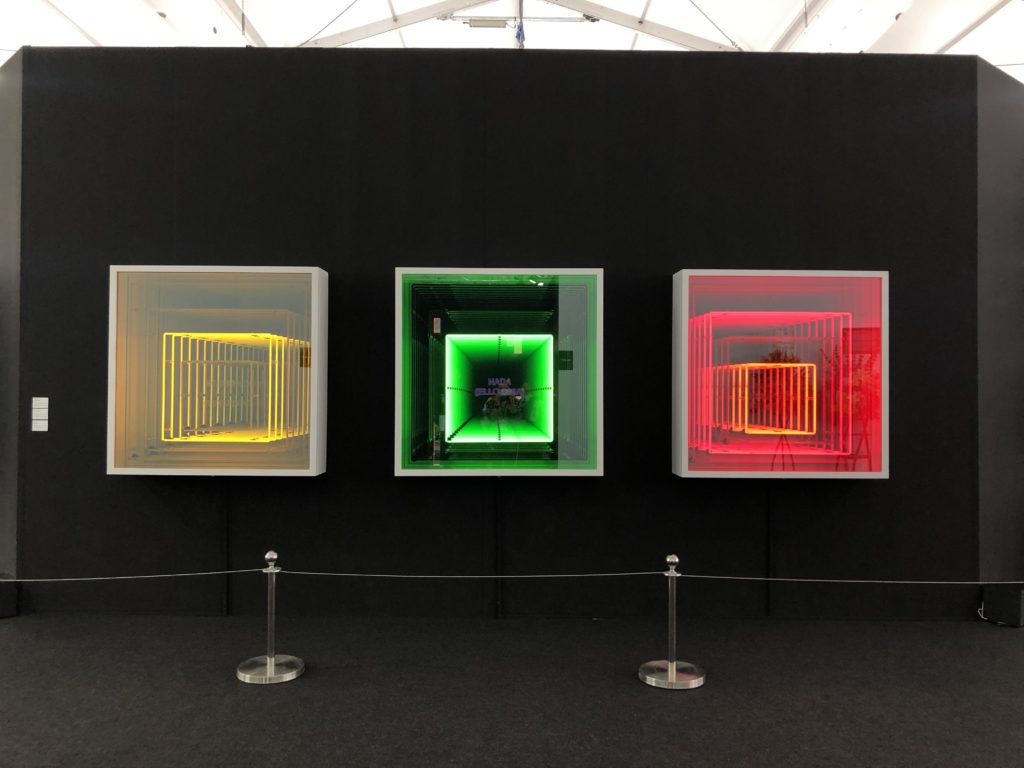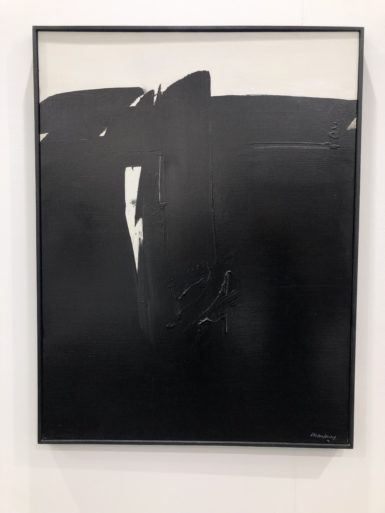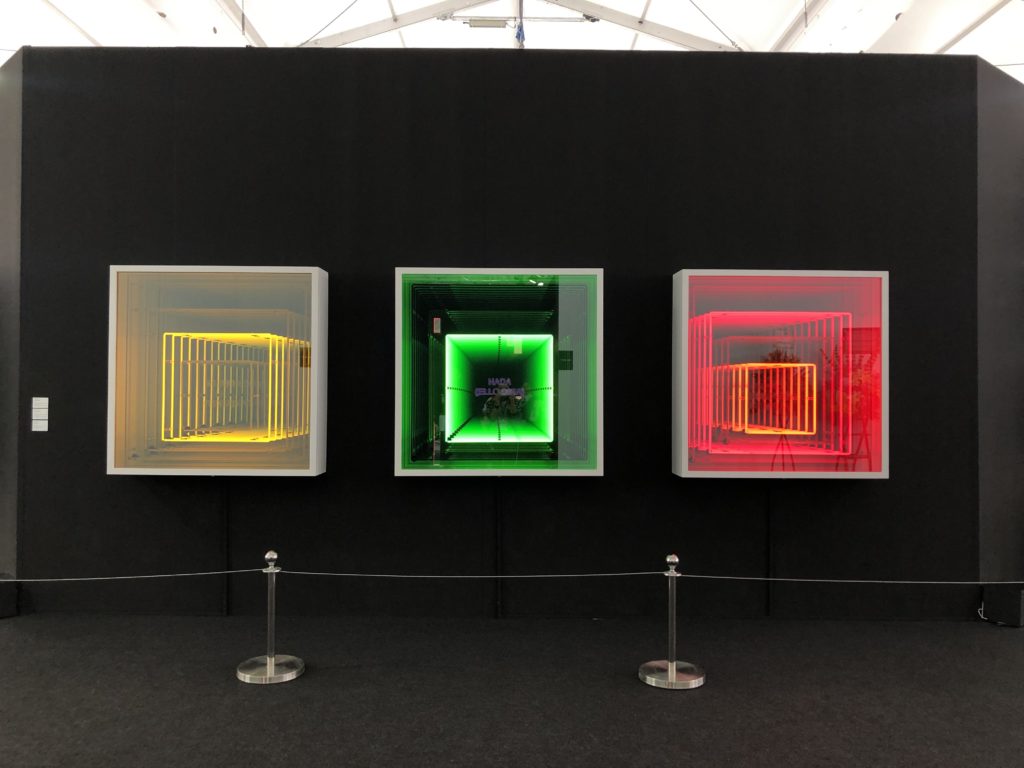[ad_1]

Works by Iván Navarro at the booth of Gallery Hyundai at Art Central Hong Kong 2019.
JANELLE ZARA
Visitors to this year’s Art Central Hong Kong fair, now in its fifth edition, are greeted by a wall of Instagram-worthy Iván Navarro works constructed from rows of colored fluorescent lights, sending viewers into the Chilean artist’s infinite-feeling neon tunnels as soon as they walk in. The other side of the wall, however, is decidedly more serene. Among the works on view behind the Navarro piece is Minjung Kim’s Red Mountain (2018), a watercolor monochrome with its colors diffusing softly across mulberry Hanji paper.
Both pieces were exhibited at the fair, which runs through Sunday at the Central Waterfront, courtesy of the Seoul-based Gallery Hyundai, which brought with it a spread of both Korean and international artists—a photograph of Pyongyang by Thomas Struth, a painted resin and plaster collage by Kwak Duck-Jun, and a baroque wall-mounted Murano glass sculpture by Fred Wilson are among its offerings. It’s a typical booth at the fair, bringing together work by artists based in the Asia Pacific region and those far beyond it to remarkable effect.

André Marfaing’s Août 72-40 (1972) sold at the booth of Phoshorus & Carbon at the 2019 edition of Art Central Hong Kong.
JANELLE ZARA
With 75 percent of its 107 exhibitors hailing from the Asia Pacific, Art Central places a stronger emphasis on the region than the Art Basel Hong Kong fair, located just up the street. Dealers at Art Central, however, said that attendees’ passion for artists of local renown equaled their fervor for those who had achieved international fame.
On Thursday, Ji Won Lee, of the South Korean gallery Phosphorus & Carbon, said she had already sold Août 72-40, a 1972 canvas by the late French painter André Marfaing. Although her gallery specializes in the avant-garde that formed during the 1970s in Daegu, where her gallery is based, she said that her booth illustrates a dialogue between French and Korean artists. Whereas Marfaing aggressively spread his oil paint across the canvas and left each stroke visible, Hyong-keun applied blocks of paint to linen, allowing it to blur and bleed at the edges.
Fiumano Clase, a London-based gallery with a second location in Gothenburg, Sweden, reported no sales, but gallery cofounder Andrés Clase said there was “strong interest” in works by the Hungarian painter Dénes Maróti, who, for one canvas on view at the fair, set blurry bathers against the still blues of water and sky. Clase said that he’s shown at the fair for the past four editions, and each time he’s done it with the same approach. “We tend to show the artists that are core to our gallery, rather than trying to pander to the market,” he says. Thus far, he said, the fair has been an excellent starting point for conversations. “We always like to meet new people who may come as collectors—not immediately, but a little bit down the line.”
[ad_2]
Source link

